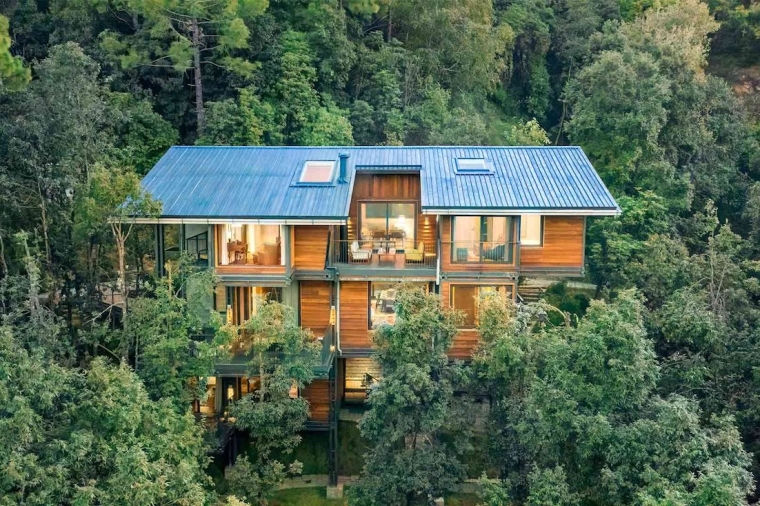
Photography Avesh Gaur.

Photography Avesh Gaur.
If one were to ask Ambrish Arora, founder of and a Principal at Studio Lotus about the firm’s evolution since their establishment in 2002, he’d tell you it could be looked atthrough multiple lenses. He was at that time a partner with Amardeep Behl on the Khalsa Museum narratives at Design Habit. Studio Lotus Co-founders Sidhartha Talwar and Ankur Choksi were team members at back then. Eventually, working on a subsequent interior project with Sidhartha made Ambrish realise how fulfilling the entire experience was, the sharp focus on detail, space and material was far more exciting. The project went on to win a few awards owing to its radical outlook. This was a moment when Ambrish decided working in the domain of creating spaces was what he wanted to pursue instead of exhibition or museum design. Thus, Studio Lotus was born and established as a multi-disciplinary practice by Ambrish, Sidhartha and Ankur.
Their journey hasn’t been easy, the first six to seven months were spent struggling without almost no work, meagre savings and no actual experience. Despite working with limitations, the founding members were very clear with what they wanted for their firm; for them to push the envelope for interiors and the built form. Their focus from the onset was on frugal innovation and what could be done with few resources. The only way of working on a lower budget was to find their way with what was locally available. Their philosophy materialised due to their circumstances and the desire to do more with less. We’re in conversation with Ambrish Arora, Sidhartha Talwar, Ankur Choksi, Asha Sairam and Harsh Vardhan the Principals at Studio Lotus who tell us more about the firm’s evolution, good design in India, their future and more.
DESIGN IN INDIA
Ankur Choksi: We in India have a very rich repository of indigenous thinking which is historical, local and regional. We find that currently a large part of our idea of sustainability has been heavily shaped by the west, it is heavy on engineering and ends up creating another problem of extra material, extra cost. It is extremely vital to recognise that it isn’t one size fits all. Each region within the country generates a different response be it in terms of climate, culture or the social aspect and we need to look at what is available and easy to do within that context.
In Rajasthan, it’s easy to work with stone whereas in Ladakh, one uses a lot of mud and clay. The ability to study our history of material and skill is critical. If we were to look inward and combine that with current best practices then every project has the ability to produce an outcome that is forward looking.
This article is an all exclusive from our November Bookazine. To read the entire article, grab your copy here.
Text Unnati Saini
Date 13-01-2023

Photography- Noughts and Crosses LLP.